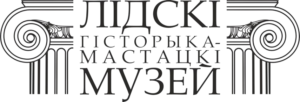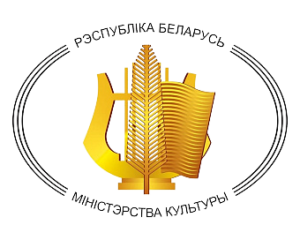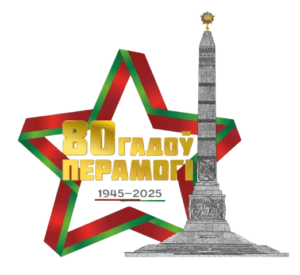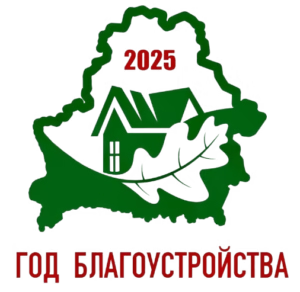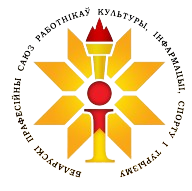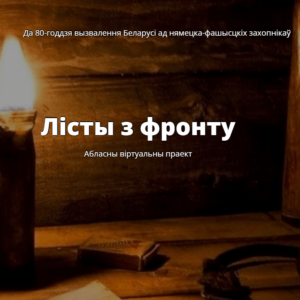The Rise of 1863-64 years. did not have such devastating consequences for the formation of the Northwest Territory as the uprising of 1830-31. The Ponevezh and Keidan gymnasiums, the Svisloch progymnasium, the Drogichin noble three-class uyezd school and the parallel classes of the Bialystok gymnasium were closed. Four nobiliary district schools, including Lida, since July 1, 1865, were lowered in level and converted into two-grade district schools for teaching children of all classes: “Having found in the cities of Troki, Oshmyany, Disna, Vileika, Novoaleksandrovsk, Ponevezha, Sokolka, Pruzhany, Volkovysk, Belsk, Kobrin, Borisov, Hegumen and Rezhitsa and in the town of Mir two-class district schools, to transform into the same institutions Lida, Vilkomir, Rossien and Slonim three-class district schools. ”
On a long-term vacation, teachers of Catholic faith were sent. The Lida School retained its membership – there were both teachers of the law IIKoyalovich and LFNarkevich and a teacher of mathematics NDGolub.
An honorary superintendent who was responsible for “overseeing and facilitating the success of well-being” was left by the court counselor of the Order of St. Anne of the 3rd degree and a gold medal for the rescue of the dead Count Adam-Jusef Karlovich von Gutten-Chapsky (1865-74), owner of the estate Novoselki Oshmyany uyezd. After him two years in this honorable post was the famous beekeeper, the chairman of the All-Russian Society of Beekeepers and Gardeners Lev Mikhailovich Redko (1880-81).
The head of the district schools was a staff superintendent. His requirements were very high: he had to have a civil rank of the ninth grade, differed in “zeal for service”, good conduct and knowledge, combine the post of superintendent with teaching one of the subjects and live in the building of the school. For 37 years, nine full-time caretakers were replaced in the Lida Uyezd School: Ilya Protasiewicz, the caretaker and teacher of the Russian language (17.08.1865-69), the curator and teacher of the Russian language and history, Pyotr Timofeevich Shidlovsky (28.03.1870-71), the ranger and teacher of mathematics and geography titular adviser Nikanor Danilovich Golub (19.09.1872-75), and so on. the supervisor and teacher of mathematics and geography Karl Yakovlevich Schmidt (15.01.1876-77), the curator and teacher of mathematics and geography Nikolai Dormidontovich Yurachev (17.02.1877-80), the curator and teacher of the Russian language and history Nikolai Grigorovich (1.11.1880-81) , caretaker and teacher of mathematics and geography, court counselor, chevalier of the Order of St. Stanislaus and St. Anne 3 tbsp. Stepan Semyonovich Svidersky (1.09.1884-97), caretaker and teacher of mathematics and geography, holder of the Order of Stanislav 3 Art. Fedor Feodorovich Okhrits (21.10.1897-99), curator and teacher of mathematics and geography chevalier of the Order of Stanislav 3 Art. Fedor Lyudvigovich Novitsky (3.11.1899-1902).
The main subject in the school was the Law of God. The law was taught by priests of the Orthodox and Catholic faith. The immortal teacher of the Orthodox faith remained the archpriest Joseph Iosifovich Koyalovich (1865-1902). The lawmakers of the Catholic confession changed in 2-3 academic years: the priest Lev Narcievich (28.09.1865-67), the vicar Vikentiy Roetsky (10.01.1867-69), the graduate of the Vilno Roman Catholic Seminary, the knight of the Order of St. Stanislaus, 3 st. Dean Bronislaw Y. Karpovich (20.10.1869-76), the Knight of the Order of St. Anne and St. Stanislaus 2 Art. Adam Kozmian (1.08.1876-78), Deans Sylvester Schmigero (18.10.1879-1881) and Romuald Stashevich (3.09.1883-84), the priests Francis Bukovsky (1.08.1886-87), Joseph Deksnis (1.08.1887-90 ), Joseph Mekelyunas (25.10.1890-92), Alexander Dzheshuly (1.08.1892-93), vicar Joseph Vrublevsky (1.08.1893-94), Kazimir Stanionis (9.09.1895-97), the dean, the gentleman of the Order of Stanislav 3 st . Iosif Senkevich (16.12.1897-1902). According to the order of the curator of the Vilensky training district, I.P. Kornilov’s Law God’s disciples of the Catholic confession had to be taught in Russian. Not all priests adhered to this order. If Dean Bronislaw Karpovich for conferring additional sermons in Russian on the church was awarded the Order of St. Stanislaus, then Dean Romuald Stashevich served six months in the Grodno monastery for “anti-Russianness”.
Along with the Law of God, the Russian language was taught, sacred and church history, Russian and universal, geography, arithmetic, geometry up to and including stereometry, but without proof, drawing, drawing and drawing.
Teachers of district schools were assigned to the people of the “free state”, the 12th grade of the civil service, who provided reliable evidence of immaculate behavior, admitted for their moral qualities as teachers.
Teachers of the Russian language and history Ioannikii Konstantinovich Sokolov (1872-74), Yakov Ilich Shoro (17.09.1875-77), Russian language and geography (history) Strukov (29.09.1877-80), Russian language and history Vladimir Pavlovich Yuzefovich (1.10 .1888-93), Vladimir Nikolaevich Sirochinsky (1.08.1893-97)
The front of the Lida School
Lida district two-year school was located on the street. Kamensk (now Lenin Street) in the private house Rudnitskih. The children of all classes were trained, in the 1870s – 60-69 pupils, in the years 1890-94. – 40 students, in 1895-1902 years. – 63 pupils.
October 9, 1899. Teachers and 36 pupils of the 2nd class of the Lida Uyezd School.
The second row: from left to right: the teacher of calligraphy Yakov Kashin, the teacher of the proto-priest II Koyalovich, staff inspector F.F. Ohrits, the scribe dean Joseph Sienkiewicz and the teacher of Russian language and history IMPaul.
To enter the district school, the student should be able to read and write and know the first four rules of arithmetic. They studied 6 days a week, except on Sundays and public holidays. For four days, except Wednesday and Saturday, there were 4 lessons per hour and a half. Only boys were trained. Training was paid. The term of study and the age of the students were not limited.
At the end of the academic year, the staff and honorary caretakers conducted tests of students. Students who passed the exams in a solemn atmosphere, in the presence of their parents, were given certificates, honors pupils were additionally awarded with books or commendable sheets. Pupils who did not pass the test were allowed to repeat the training.
Graduates of two-grade district schools received the first class rank and were accepted to civil service as clerks. They enjoyed privileges for military service.
Kiprian Antonovich Kondratovich studied in the Lida district two-grade school, a native (1859) of the village Zinevichi of the Lida Poveta, the future general.
Original sources:
Ganchar A.I. The Roman Catholic Church in Belarus (tenth of the nineteenth and early twentieth centuries). Grodno. 2010.
Memorable book of the Vilnius province on 1866.1867, 1869, 1870, 1873, 1877, 1880.
The commemorative book of the Vilnius Academic District on 1874, 1875, 1876, 1877, 1877/8, 1879/80, 1880/81, 1887, 1890/91, 1892/93, 1895/6, 1898/9, 1900/901, 1901 / 902 academic years.
Collection of resolutions on the Ministry of National Education. Volume 5. The reign of Emperor Alexander II. 1871-1873. Pp. 183-184, 313.
Valery Slivkin,
Senior Researcher of the Lida Historical and Art Museum.
